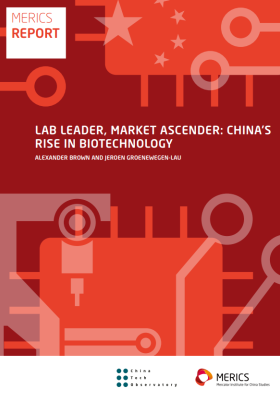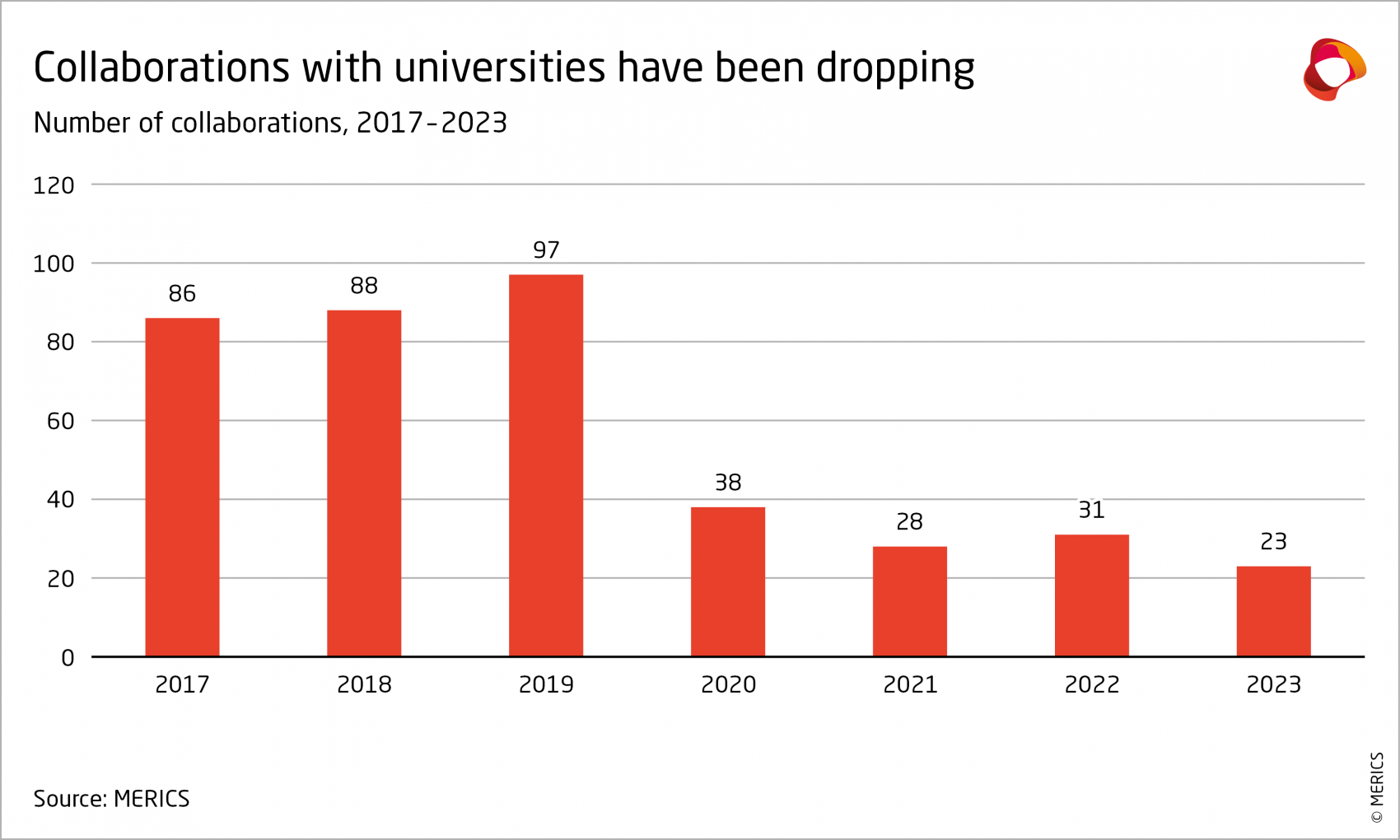

Country Profile: Italy
You are reading the country profile for Italy. Click here to go back to the country profiles overview page.
1. Introduction
The signing of the Belt and Road Initiative’s Memorandum of Understanding (MoU) and the State Visit by Xi Jinping in March 2019 remain the pivotal moments of the bilateral relationship between Italy and China. Despite the emptiness of the agreements signed in 2019, the event has had significant importance for Italian diplomatic relationships. Five years after the signing, in 2023, Italy is still impacted by the MoU as it discusses the possibility not to renew it and the consequences this decision might have. The need to a maintain good relationship with China even incase of non-renewal of the MoU has led the government to negotiate a strategic partnership with China. Not only politics, academia too is trying to get the exchanges and collaborations restarted after the difficult years of the pandemic.
2. Key Categories
Economy
Italy’s economic relationship with China is similar to that of many other EU members: it has a growing trade deficit (+EUR 22.3 billion between 2019 and 2022). However, Italy has attracted much less Chinese investment than other large European economies (i.e. France and Germany): Italy received EUR 16 billion in investments between 2000 and 2022, compared to Germany's EUR 32 billion. As for trade, most of Italy’s trade to China passes through Germany. The figures on Italy’s trade deficit with China only show direct trade and do not count the role Italy plays in internal European supply chains of exports to China.
Italy’s main exports to China are medications, leather handbags and vehicles. For imports, cellular telephones top the list, followed by computers, scooters and iron or non-alloy steel. Overall, the top five Chinese imports to Italy tend to have higher added value than Italy’s top five exports to China. Cars and trucks are major exports, but cars slip out of Italy’s top five after 2019 and only reappear in 2022. Trucks feature consistently. In 2021, the Chinese FAW Jiefang sought to buy Italian truck maker Iveco, one of Italy’s major truck makers, but the government blocked the acquisition. Italy’s vehicle exports have petrol engines, so if the future is EV, Italy is a stark position. In 2022, lithium-ion batteries appeared in Italy’s top five imports from China for the first time. As in other European countries, Italy’s reliance on battery imports from China is likely to grow.
The Italian government emphasized boosting trade and investments in 2018-2019 and this was the main motivation behind its decision to join China’s BRI framework by signing a Memorandum of Understanding. Almost five years later, the MoU has not brought about either. The ongoing trade deficit has been publicly cited by Italy’s defense minister as a reason why Italy should not renew the MoU.
In 2023, Italy decided to follow the example of France and Germany and sign economic bilateral agreements with Chinese counterparts rather than sticking to the BRI MoU.
Politics
Politically, the right-wing coalition led by Giorgia Meloni has displayed a cautious approach to China, similar to Italy’s pre-2019 stance. It aims to keep Italy firmly in the transatlantic system while seeking a positive economic relationship with China.
The Five Star Movement remains the most vocal supporter of a strong bilateral relationship between Italy and China. The parliamentary Friends of China Group meets with the CCP’s International Liaison Department. At an online meeting in June 2022, representatives from the Five Star Movement, Brothers of Italy and the Democratic Party were present. In 2023, Liu Jianchao, the head of the ILD visited Italy to woo the government as it weighed up whether to renew the BRI MoU. He met the Friends of China Group and many heavyweight political figures, including Senate President Ignazio La Russa, Minister of Foreign Affairs Antonio Tajani, Massimo D’Alema (a longstanding supporter of China), the new Secretary of the Democratic Party Elly Schlein, and the Italy China Council Foundation.
With Italy’s ever-changing governments, there is a limit to how much the small number of bureaucrats who deal with China officially can do to maintain a stable approach to China.
China-related capacity building within the government and the ministries remains limited, despite some important progress made by the government of Mario Draghi and now that of Giorgia Meloni. Within the Ministry of Foreign Affairs, the Northeast Asia Desk numbers five people, including the head of the Asia region. The G7/G20 portfolio is handled by a former ambassador to Beijing and China capacity has been improving overall, via direct hiring and training for existing officials.
The attention given to the BRI MoU in 2023 may have given the impression that China is a foreign policy priority. A truer picture is given by the absence of a China strategy and the few personnel dedicated to China. Italy’s foreign policy priority remains its neighborhood, specifically the Mediterranean region. Nonetheless, whether Italy prioritizes China or not, China-related matters have an impact on Italy.
Security
Italy has blocked some notable Chinese acquisitions in recent years, but it has not acted as efficiently in dealing with Chinese companies’ presence in its telecommunication infrastructure. Up to 2022, Chinese vendors had a 51 percent share of Italy’s 5G network. Huawei and ZTE built Italy’s 4G network so it is difficult and costly to replace Chinese suppliers in the 5G network.
Nonetheless, some transactions between Italian and Chinese telecommunication providers have been blocked after screening. In 2020, 17 cases related to 5G were notified. The only one blocked was Huawei Technologies Italia Srl’s bid to acquire core 5G network equipment from Fastweb Spa. In all other 16 cases, screening led to special provisions and monitoring.
Society
Italy has one of the largest Chinese diasporas in Europe, mostly in Milan, Rome, and Tuscany. Many arrived to work in the textile sector but have settled and moved into other sectors. The diaspora was sufficiently well-rooted to stay through the Covid-19 pandemic and had grown to 300,216 officially registered individuals in 2022. Of these, approximately 50,000 are students, which is a notable number given most higher education is carried out in Italian.
Since the early 2000s, Italian and Chinese universities have signed a total of 1018 bilateral agreements involving 64 Italian universities. In 2019, the year of Xi Jinping’s state visit and the MoU, signings jumped to 97, then steadied at about 30 a year. The agreements and their impacts vary widely, ranging from student exchanges to R&D.
Italy also has 16 Confucius Institutes. It lacks debate about their presence or the risks they might pose. Nor does Italy have guidelines for universities on how to handle partnerships with Chinese universities.
You were reading the country profile for Italy. You can return to the country profile overview page here.

This MERICS analysis is part of the project “Dealing with a Resurgent China” (DWARC) which has received funding from the European Union’s Horizon Europe research and innovation programme under grant agreement number 101061700.
Views and opinions expressed are however those of the author(s) only and do not necessarily reflect those of the European Union. Neither the European Union nor the granting authority can be held responsible for them.

